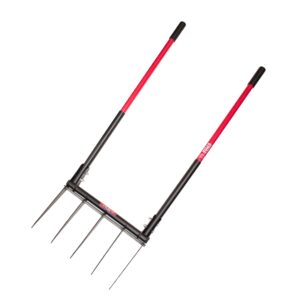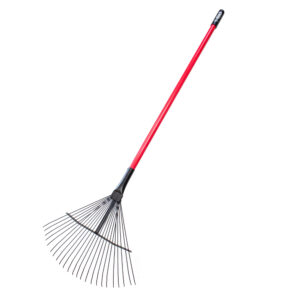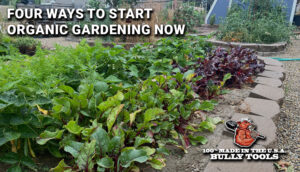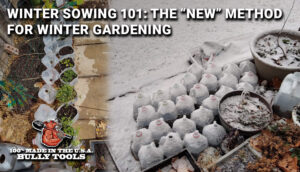Four Ways to Start Organic Gardening Now
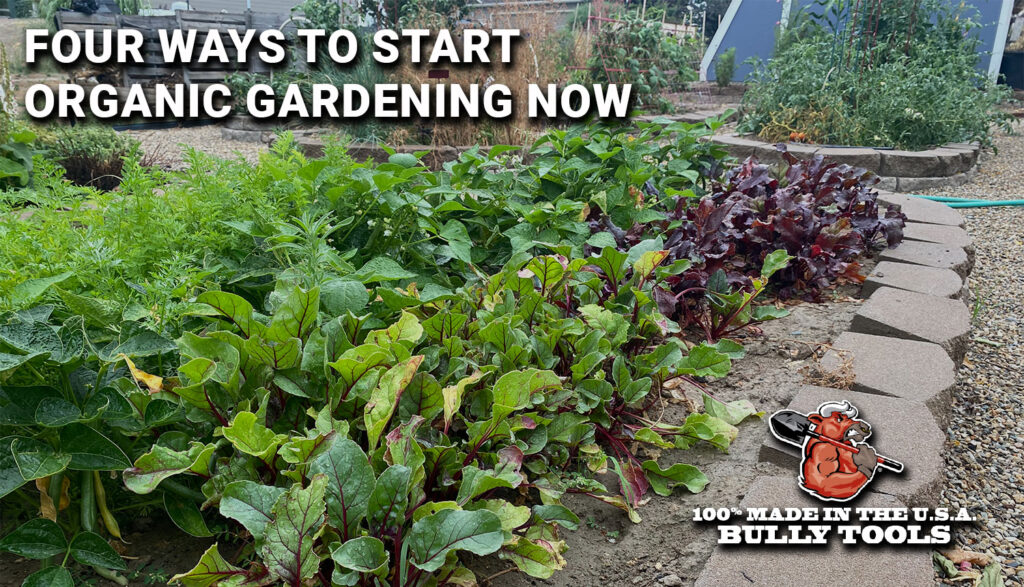
The term “organic” can seem like a popular gardening buzzword, so you may wonder if it’s really worth the effort. What does it mean to garden “organically,” anyway?
Organic gardening is a catch-all term for not gardening with synthetic products, but it’s more than that. It really means creating an ecosystem around your house or property that is self-sustaining, and that’s more complicated than simply switching synthetic pesticides and fertilizers for natural alternatives. In all reality, you may already be gardening organically in many aspects, especially if you encourage and plant for birds, prefer hand weeding to spraying, or use compost to amend your soil.
There are many reasons to use organic gardening methods, even if you don’t switch completely. The benefits of organic gardening include:
- It’s better for the soil.
- It’s better for any garden produce you may be eating.
- It can cost less—fertilizers and pesticides are expensive.
- Some organic methods require less work and effort than conventional methods.
- Organic gardening is more sustainable.
- It supports the natural ecosystem of your yard or property.
The following are some things you can implement now to begin the switch to gardening organically.
Create Healthy Soil
As a gardener you don’t have control of weather, humidity, and the change of seasons, but you can change a few things in your favor, and the top one is creating healthy soil. Healthy soil means not only plants that germinate and grow properly, but good soil also helps make water and nutrients more available and helps plants become more resistant to disease and other problems. By working with nature, organic methods help improve soil structure, moisture content, beneficial bacteria and fungi, and balances soil pH. Here are a few things you can do to create healthy soil.
- Start with a soil test. They’re available from most state cooperative extension offices, for purchase online, or from local services (easily found from an online search). Prices vary. The basic test is usually enough because it tells your soil pH and phosphorus, potassium, calcium, and magnesium levels. Learn more about soil tests and what you can learn from them here.
- Probably the easiest way to create healthy soil is to start composting. By using materials from your garden, trash, and kitchen you can add useful nutrients back into your soil. Learn more about how to compost here: Garden Composting 101: Recycling Waste into Fertilizer.

- Many gardens can’t produce enough compost to fertilize all growing areas as fertilizer, so the next best organic multi-use fertilizer is well-rotted manure (the aging / rotting / drying process kills off weed seeds and pathogens). This can be from chickens if you have them, or from outside sources such as local farms or purchased at nurseries.
- A variety of organic fertilizers are available at retailers and can be designed for more specific needs (see “Use Organic Products” below).
It may take several years to reach the goal of good soil texture that easily absorbs water and is loose enough for oxygen. You’ll know you’re on the right track when you find soil full of happy earthworms.
Know the Plants Best Suited to Your Soil and Climate AND How to Take Care of Them
You’re probably wondering what this section has to do with organic gardening. It’s important to understand that plants not suited to your soil or climate are more likely to be stressed and susceptible to insects and disease—which can often only be resolved with sprays or other harsh interventions. By knowing your soil type and climate and planting accordingly, you save yourself the expense of dealing with unnecessary problems. Here are a few things you can learn to have happier plants.
- Know your hardiness zone (find it here)—Knowing your hardiness zone helps you to choose which plants can survive your climate and weather.
- Know a plant’s lift cycle—First-time gardeners often worry they’re doing something wrong when a plant dies back or changes color. For example, when a bleeding heart blooms beautifully in the spring but looks completely dead by the end of the summer a gardener may think they’ve killed it. But this is normal behavior for this plant. Another example is that coreopsis is often one the last plants to break dormancy in the spring. Learn about your plant’s life cycle and its needs so you don’t overwater or over fertilize and cause damage.
- Companion planting—This is a popular method of planting flowers or crops near each other to help increase soil nutrients and deter pests, naturally. There are many online articles out there about companion planting and how to implement it in your garden.
- Consider using plants that are native to your area as well as heirloom vegetables, which are often less susceptible to pests and disease.

Weed, Pest, and Disease Control
Promoting healthy soil and choosing appropriate plants for your garden are the best possible start for creating an organic-based garden. However, even then, all gardeners run into problems with weeds, pests, and disease. Here are a few solutions for these problems.
General
- By checking on your garden frequently you can often spot issues before they become full-blown problems. This is true for weeds (e.g., spotting them while they’re small), pests (e.g., aphid problems are easier to fix when it’s new), and disease (e.g., finding powdery mildew before it has spread to the entire plant) in many contexts. You can spot watering issues in lawn and garden beds, critter damage to trees, and many other problems while they’re still solvable without needing harsh interventions.
- Learn more about integrative pest management and its preventative benefits and how you can implement it in your garden. This can include crop rotation, encouraging predators to come to your garden (which you can learn about here https://bullytools.com/news/beneficial-animals-and-a-healthy-garden/), and choosing to use plants native to your area. This isn’t just for insects, but also works to limit disease as well as correct nutrient deficiencies or excesses. Learn more about the concept of integrative pest management here, with links that will be a great starting point in your studies.
- Consider if your plants are having a problem because they’re stressed. This can be any number of reasons, including not being suited to the climate, if it’s getting appropriate amounts of water, if the soil type is best for the plant, if it’s not getting enough or too much sun, and others. Learn more about how to diagnose a plant’s problem here. When you know what’s stressing your plant then finding the appropriate solution is easier.
- Using a diverse variety of plants in your garden will slow the spread of disease and unwanted pests—and in many cases can attract beneficial insects while deterring those you want to avoid. Avoiding monoculture (growing one kind or one variety of crop/plant) also prevents the depletion of the same soil nutrients. This method mimics nature and how many plants grow together, creates a healthy ecosystem in a garden, and requires fewer interventions.

- Watering issues are also a big factor in pest problems. Overhead watering can lead to disease and promote weeds. Water early in the morning if possible, rather than the hottest part of the day, which helps avoid powdery mildew and other fungal diseases often spread by high humidity. Water deeply, thoroughly, and only as needed; frequent and shallow watering keeps roots near the surface, which means they dry out faster and have less access to nutrients. If possible, use a drip system or soaker hoses to help prevent overhead watering. This kind of direct watering can lead to higher crop production and lower water bills.
Weeds
- Use a mulch (such as wood chips, cardboard, paper, straw, chopped leaves, or pine needles) to suppress weeds in garden beds. Other benefits that mulches provide are that it conserves water, moderates soil temperature, feeds the soil as they breakdown, prevents erosion, and protects plants over winter.
- Mechanical weeding for those weeds not suppressed by barriers either by hand or by tool use, such as with a hoe, shovel, garden fork, and others.
- There are many DIY remedies such as pouring boiling water on weeds between pavers.
Important: Not all DIY recipes out there are safe so make sure your source is knowledgeable. For example, avoid using homemade weed killers using vinegar and/or salt. Yes they do work to kill weeds but they can also damage the soil and make it difficult for anything else to grow in it!
Pests
- If you catch pest issues early, such as slugs and squash bugs, often the best solution is mechanical removal, most likely using your fingers. Having a container of soapy water handy is useful so they can be drowned and discarded so they don’t escape to cause trouble elsewhere. Other options include hosing aphids off roses, scraping eggs off the bottom of leaves, and others.
- Be willing to live with some plant damage. Organic does not mean pristine. Before you use interventions, make sure there’s a problem, that you know what it is, and if it will lead to a plant’s destruction. Some insects do a little damage (such as leaf cutter bees cutting v-shaped notches from leaves) and move on without causing detrimental damage.
- Know the difference between beneficial and damaging insects. Just because a bug is on your plant doesn’t mean it’s causing damage.
- If it becomes necessary, use organic pesticides (learn more below).
- There are many DIY methods out there such as creating sprays with spices such as cayenne to deter bugs on vegetables.
- Barriers such as fences, row covers, sticky traps, foil collars, netting, and others all work to keep animals, insects, and other pests from chewing on the plants we want to keep.
Disease
- Just as with weeds and pests, mechanical removal is an important line of defense. Remove diseased plants, limbs, or leaves to prevent spread.
- There are many organic products you can use to prevent and stop the spread of pathogens (see below).
- Prevent disease by giving plants enough room so there is adequate air flow—this also applies to the inside of plants such as thinning crossing limbs and branches of trees and roses.
- Always sterilize garden tools after cutting or removing diseased plants.
Use Organic Products
When creating healthy soil, knowing the best plants for your climate, or pest deterrence isn’t enough, you can use organic products, such as herbicides, insecticides, fungicides, and other pesticides for help. However, many home gardeners believe that these products are used because they are non-toxic. “Organic” means not toxic, right? Not necessarily. From Scientific American’s article “Mythbusting 101: Organic Farming > Conventional Agriculture” it says, “Organic pesticides are those that are derived from natural sources and processed lightly if at all before use. This is different than the current pesticides used by conventional agriculture, which are generally synthetic. It has been assumed for years that pesticides that occur naturally (in certain plants, for example) are somehow better for us and the environment than those that have been created by man. As more research is done into their toxicity, however, this simply isn’t true, either. Many natural pesticides have been found to be potential – or serious – health risks.”
- ALWAYS follow label instructions when using organic pesticides or other organic products. Just because it isn’t something that will persist down the food chain doesn’t mean it can’t cause you or pets any harm if you breathe it in, ingest it, or accidentally spray it on exposed skin.
- Most homemade or organic sprays like Neem oil can’t tell the difference between insects and will kill bees just as easily. Always check the label or research if you aren’t sure.
- Diatomaceous earth is an abrasive white powder that damages the cuticle, skin, and joints of insects, making it a great slug barrier, too.
- Neem oil is made from the seed kernels of the Neem tree and can be used to control many insects, mites, and diseases like mildew and black spot.
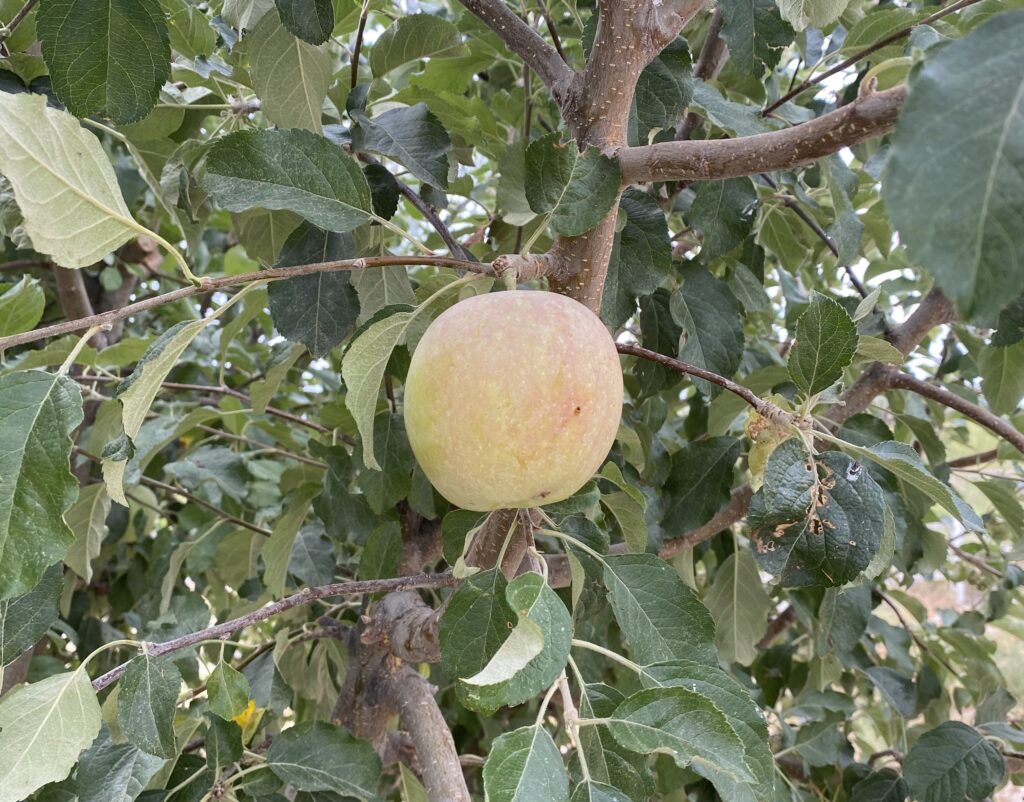
- Spinosad is made of fermented bacteria that naturally occur in soil. It kills bugs by paralyzing them, either on contact or when they eat leaves that have been treated. It is toxic to bees, but is safe for them once it dries.
- Insecticidal soaps are made using potassium salts of fatty acids, and they kill soft-bodied insects by dehydrating them and suffocating them.
- Beneficial nematodes are microscopic organisms that live in soil and prey on insects that cause problems in the lawn and garden. Purchase live beneficial nematodes online or from garden centers—or even better, directly from a producer (so they’re as fresh as possible when you get them).
- Milky spore is a bacterium that poisons beetle grubs when they eat it. This can control a grub population for 10–20 years, but once it’s applied it takes a few years to see full results.
- Predator or parasitoid insects eat typical lawn and garden pests (predators) or lay eggs inside pests, killing them (parasitoids). Learn what you’re dealing with first to know the exact species you’ll need.
- Many organic pesticides can target specific problems such as using Bt for caterpillars (Monterey sells a good one) or Sluggo for slugs and other soft-bodied pests, and won’t kill bees.
- There are many excellent organic fertilizers on the market (such as Espoma or Fox Farm). Other organic fertilizers can be plant specific, such as:
- Leafy plants can get nitrogen from manure tea, coffee grounds, or blood meal.
- Fruiting tomato/cucumber/peppers/melons need phosphorus, which they can get from rock phosphorus or bone meal.
- Roots crops such as carrots, potatoes, and beets as well as garden flowers need potassium, which can be obtained from kelp meal.
- Pest traps come in many varieties and are useful when you want to avoid sprays or powders. Some catch pests with an adhesive while others contain bait and poison that pests eat and pass on to other members of their colony.
Here’s To a Healthy Garden
Organic gardening doesn’t have to be all or nothing. Implement what you think is possible now and work bit by bit where you can. The end result will be worth it.


